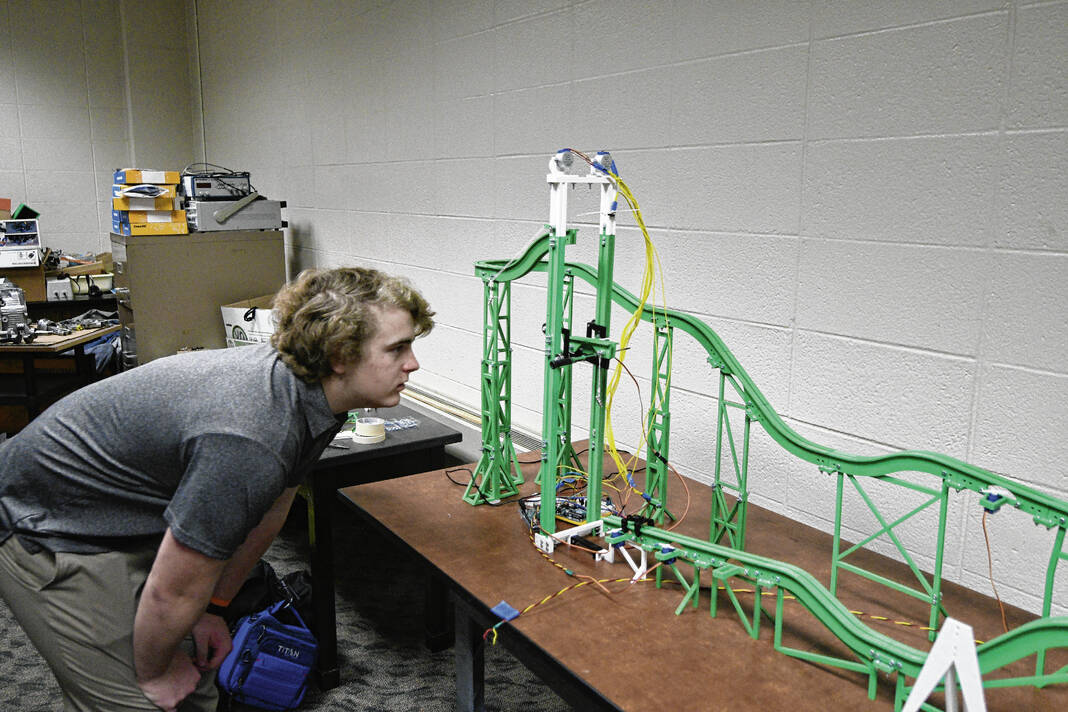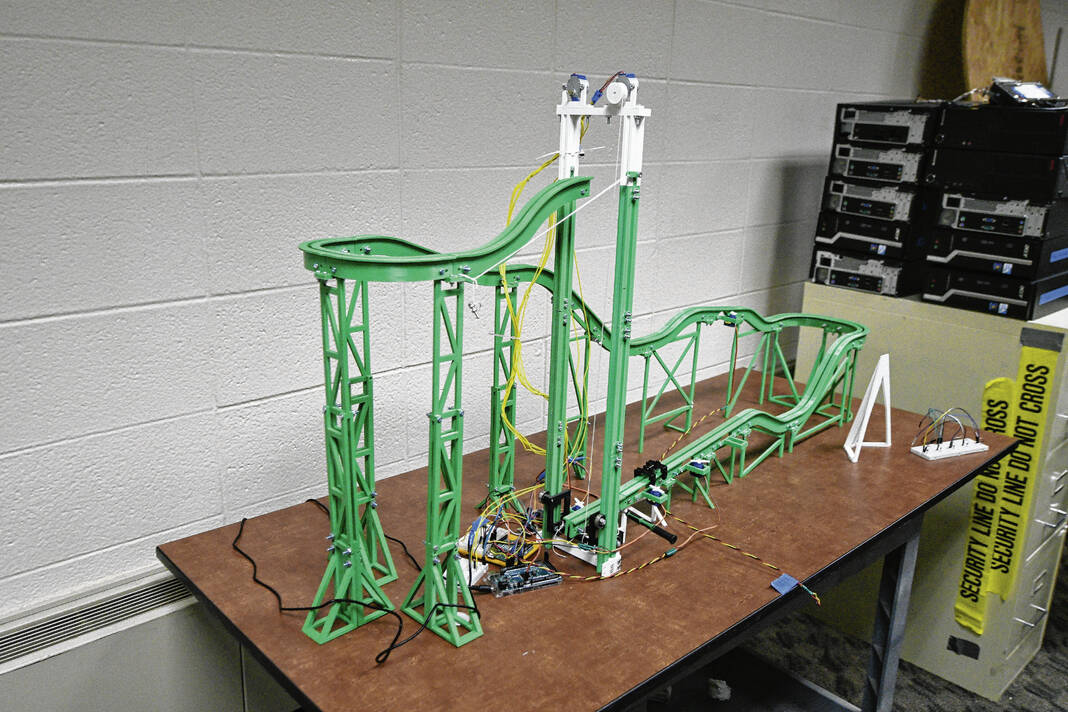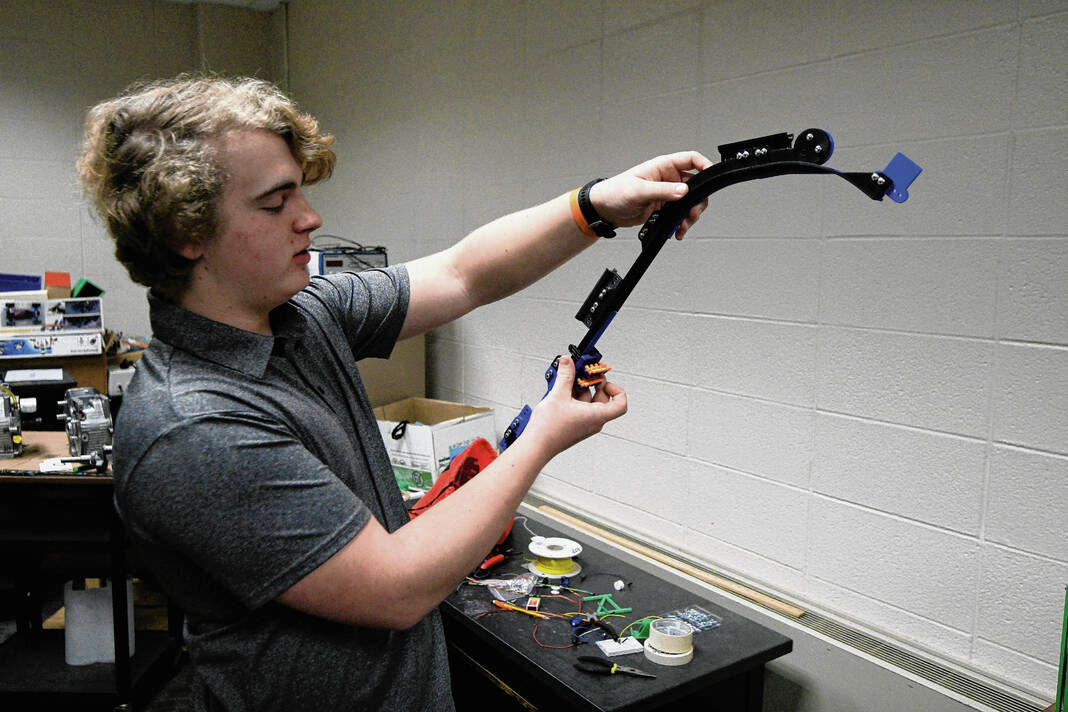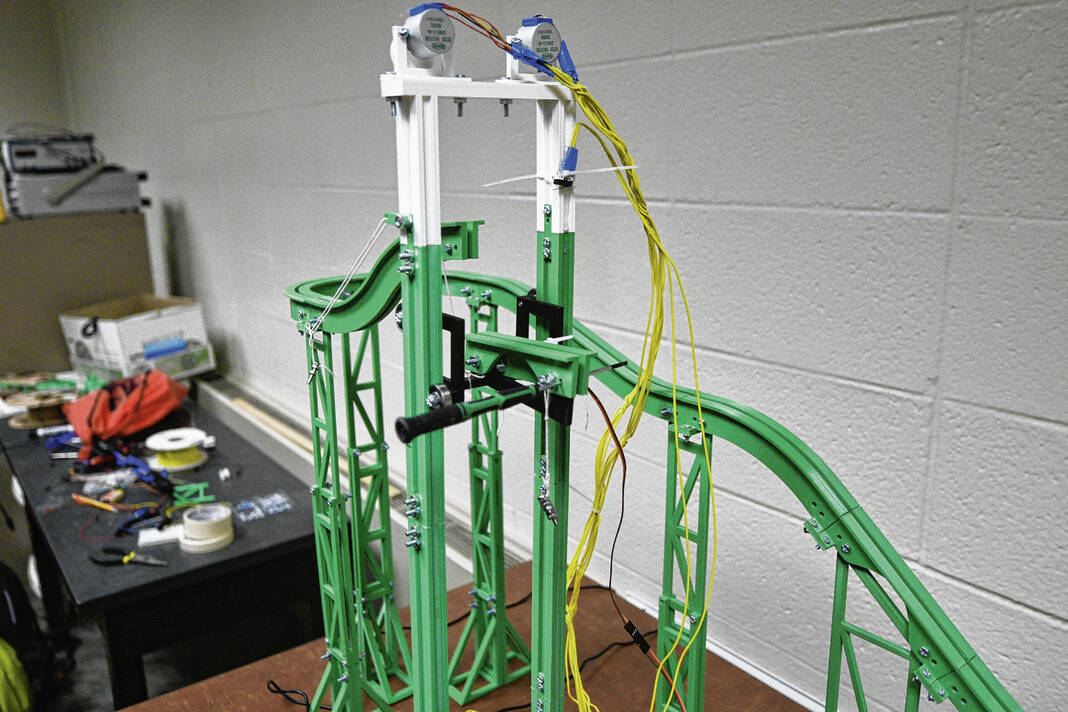As he plummeted through the air, he was filled not with terror, but with wonder.
Greenwood Community High School senior Charlie Jackson fondly remembers a seventh-grade trip to Kings Island. He sat in the front row as the roller coaster he was on soared and fell. He didn’t just want to continue riding roller coasters though, he wanted to design them.
Now, he’s doing just that as part of his senior project. Students at Greenwood Community High School are required to complete a capstone project during their senior year, involving job shadowing, a community service project or a creative pursuit. Students do so in an independent research class, where they can ask for advice and direction but ultimately are in charge of their own projects.
Jackson has already spent about 500 hours on a 4-foot wide 3D-printed roller coaster with support structures. Engineers from Endress+Hauser worked with him last summer on the feasibility of different prototypes for the coaster, including the proper track width, slopes and angles to ensure the miniature coaster car wouldn’t fall off the track.
He got advice along the way, but Jackson did all the research for the project himself. He also programmed a pulley-style elevator to get the car from the bottom of the track to the top, he said.
“After I went on the field trip in seventh grade, I was hooked,” Jackson said. “I wanted to do as much hands-on engineering as I could.”
The 3D printing part of the project took Jackson about 100 hours, with each piece of the track taking him two hours. Jackson spent 36 hours on prototypes for the track and elevator, and another 100 hours on Computer Aided Design, or CAD, work to prepare for the 3D print, he said.
“There were a few track designs to get through and then at one point in the layout, the car couldn’t make it up a hill, so I had to redesign a new piece, and voila,” Jackson said.
Jackson said the engineering he’s seen in Universal Studios roller coasters inspired him to push the limits of his designs. The coaster he’s built as part of his senior project includes block zones, allowing multiple cars to run simultaneously on the track without crashing into each other.
“I wanted to pursue a career as a future ride engineer with Universal Creative,” he said. “They push the limit on how many riders can ride at once. They’re always coming up with new rides and that’s what pushed me to create various systems like the elevator lift and block zones.”
Kevin Leineweber, who teaches independent research at Greenwood Community High School, pushed Jackson to strive for more from his project.
“In independent research, I’m allowing each student to follow their own passion and follow a level that makes sense to them, and I keep pushing him to do a little bit more and better than what he thinks he can do,” Leineweber said.
Jackson plans to study engineering at Purdue University, Rose-Hulman Institute of Technology or Ohio Northern University. In one of those colleges, he’ll be able to study electrical engineering, which concerns the wiring to power the roller coasters; software engineering, to program the coaster’s system; mechanical engineering, for the elevator and braking system; and civil engineering, which covers the support structure and track to hold it all together, he said.
Jackson isn’t satisfied with just one roller coaster. He wants to create an even more complex and refined one by the end of his high school career. He’s currently working on a coaster with a chain lift, Jackson said.
The most common roller coaster lift, a chain lift pulls riders up on a diagonal incline to the top of a drop, where gravity and momentum carry them the rest of the way.
“It will feature a chain lift instead of an elevator lift and will feature an inverted track with loops, corkscrews and banked turns, and a more modular and connected support system,” Jackson said. “Without this class, I wouldn’t push myself as hard as I do. It helps me pick up momentum as I head to college.”










